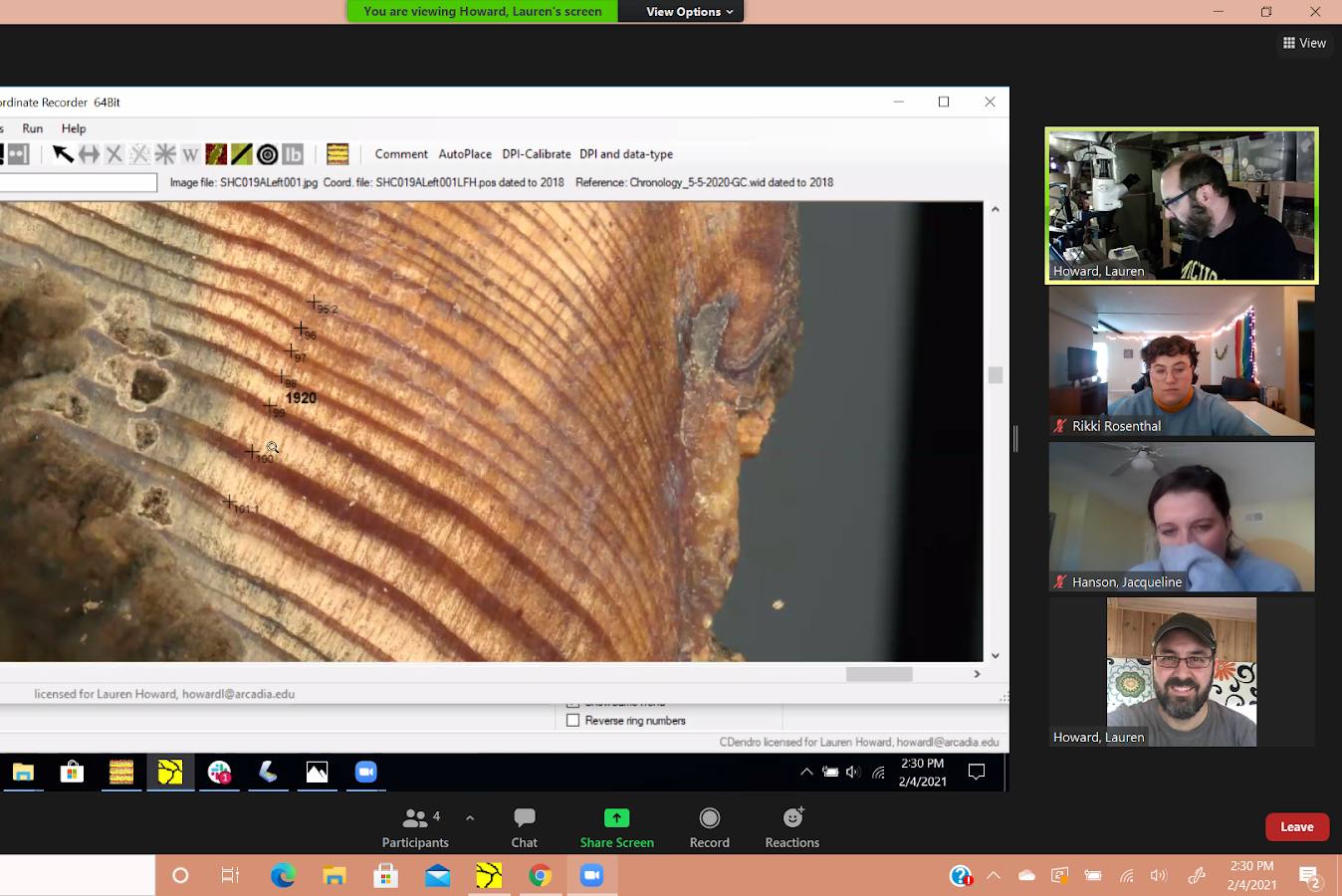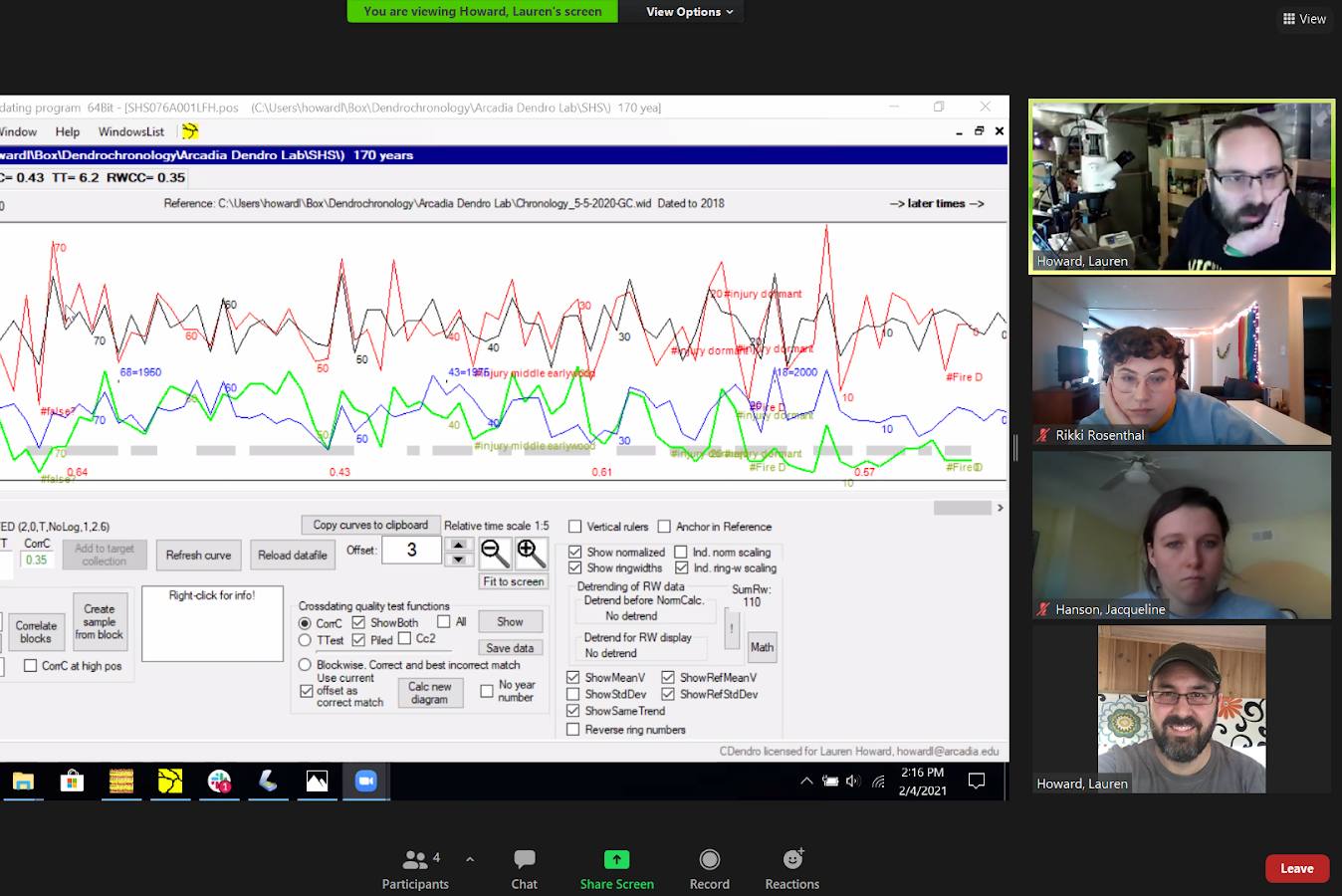How the Dendro Lab Taught Me It’s Okay to Not Know What You’re Doing
When I first started my journey at Arcadia, I was a Biology student. One aspect of the Biology Department that intrigued me were the faculty-sponsored research labs. The majority of professors within the department have research labs, ranging from microbiology to animal behavior to forest ecology. The labs are a great way for undergraduates to gain laboratory experience outside of the classroom.
Getting My Foot in the Door
When I first heard about Dr. Lauren Howard’s dendrochronology lab at orientation, I knew I wanted in on the action.
– Rikki Rosenthal
When I first heard about Dr. Lauren Howard’s dendrochronology lab at orientation, I knew I wanted in on the action. I spent so many days as a kid trying to count the tree rings on stumps in my backyard. The concept of dendrochronology perplexed me, and I knew I would do whatever I could to learn more about the lab. I approached Dr. Howard almost immediately, introducing myself, and letting him know that if there were any openings in his lab, I would be interested in joining the team. He was so receptive to my enthusiasm that he encouraged me to stay in touch with him while I completed my basic Biology requirements. Over the next year, he would send me articles related to fire disturbance ecology, the main field of study within his lab.
Dendrochronology is the scientific method of dating tree rings to the exact date they were formed. In Dr. Howard’s lab, we use dendrochronology to study fire disturbances. In ecology, a disturbance is defined as a temporary change in environmental conditions that causes changes in an ecosystem. So in the lab, we see how fires have caused disturbances to forests, with a specific focus on pine and oak trees in Western Maryland.
What We Do in the Lab
Due to COVID-19, we’ve had to adjust our laboratory methods so that they could be done virtually. This required us to learn how to measure and date trees in a digital format. Luckily, Dr. Howard has a connection with Gabe Callahan from The Nature Conservancy, who was able to teach us how to use COORecorder, a software that allows us to date and measure trees from the comfort of our own homes. To use COORecorder, you need to have scanned images of the samples. So Dr. Howard scans the images into our shared drive on Box and then we split up the work equally so that everyone has a chance to date some samples. We have weekly meetings with Dr. Howard over Zoom to ask any questions we may have and work through tricky samples. After we date and identify the fire scars, we then compare them to our master chronology in CDendro, a sister software to COORecorder.

A master chronology is a reference used to compare new ring series for a specific region. Our master chronology comes from the Maryland Chapter of The Nature Conservancy. We use the master chronology to make sure our dating of the samples is accurate. It’s really just an extra way to ensure we dated the samples correctly.

How the Lab Has Impacted Me
I have had so much fun in the dendro lab that I have even started to incorporate the data we find into my senior Capstone project. My project explores whether there is correlation between the date of the fires and climate patterns. It’s really interesting to use the data we already have and spin it on its head to see if it relates to other scientific fields, like climate change.
Working in the dendro lab has truly changed my life for the better. When I first started, I didn’t even know dendrochronology was a field that existed. But now that I’ve had the chance to dive in headfirst, despite my unfamiliarity with the subject, I feel more confident in my ability to work in a lab. I have learned so many skills that set me apart from other students within the same major, and I hope to one day work in a dendrochronology lab professionally.
Even though working in the lab was so foreign to me at the start, I want to encourage everyone to push themselves to do things outside of their comfort zone. You might surprise yourself, you never know what amazing opportunities might come your way.



